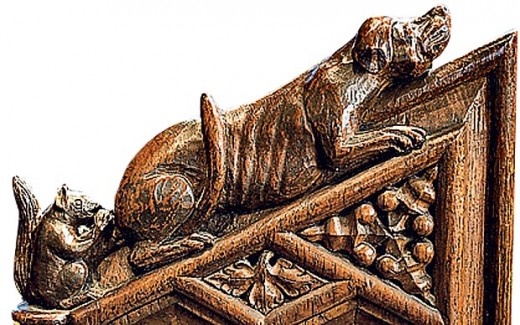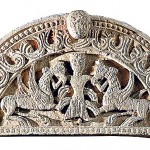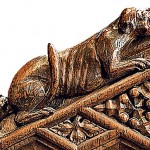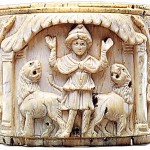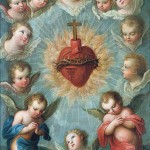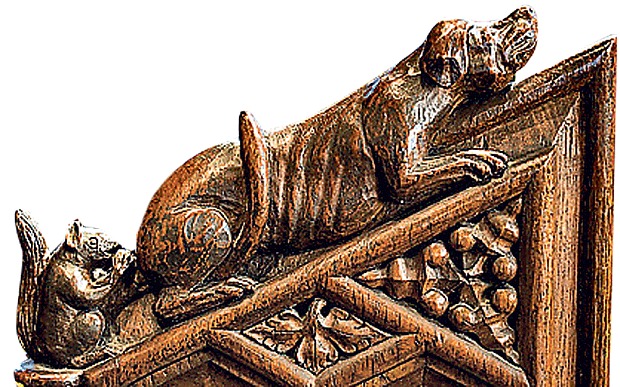great Scott! do not Pelt The Anti-Pew Warrior With Eggs
Sir Gilbert Scott left countless churches with quite fantastic bench-ends

An object of ire amongst Victorian reformers of worship used to be the pew – the field pew or the little drawing-room that richer churchgoers fitted up for his or her families, blocking the view. “what is the history of pues,” requested John Mason Neale in 1841, “however the historical past of the intrusion of human pride, selfishness and indolence into the worship of God?”
folks paid rents for his or her pews, and the negative were left to sit down on benches on the back or ledges at the facet. however in the nineteenth century, the point of interest was returning to the altar, now not the pulpit (which had incessantly been put some distance again westward in the nave). And architectural restorers hankered after a medieval type of seating, in benches with carved bench-ends, infrequently sprouting with poppy-head ornament.
these days, we may just just like the seem of outdated field-pews, irrespective of how awkward, partly as they are uncommon for the reason that intervention of 19th-century restorers. Victorian benches are thought of as unpleasant, machine-carved pitch-pine articles, ripe for elimination to facilitate espresso-drinking and a group use of the nave.
any person much pelted with eggs is G G Scott – Sir Gilbert Scott, 1811-78 – who restored so many church buildings and is blamed for an unfeeling uniformity in their seating. a unique story is instructed by way of an skilled on his work, Suzanna Branfoot, within the Ecclesiological Society’s splendid 500-page Pews, Benches & Chairs.
Scott every so often met opposition to elimination of galleries blockading windows in medieval churches. When he got here to revive the church of St Peter, Oundle, a city-corridor protest meeting was publicised by using posters in large black capitals and supported via the masters of Laxton’s college, whose boys occupied the galleries. Scott tactfully withdrew and best back 12 years later, to barter the inserting of galleries within the transepts to seat 1,500.
Scott’s general theory on seating was that outdated benches will have to be reused at any place conceivable. At Wing, Buckinghamshire, he known as for “all the seats which nonetheless maintain their historic place to be carefully repaired without being taken up or removed”. At St John the Baptist, Cirencester, just one medieval bench-end survived – carved with a pointed arch divided into what in a stained-glass window would be two cusped lights, with the apex of the main arch divided right into a trefoil. This sole survivor was once copied 350 instances, at a value of £2-10s each, for all of the church’s benches. Its churchwardens had requested he must not present carved poppy-heads, as individuals would only hang their hats on them.
Room for males’s tall hats used to be a concern. continuously hats can be placed ahead of a kneeling-board, underneath the bench seat in front. William Butterfield counselled that benches must be no nearer that three feet, to allow leg room and avoid trampling the aft neighbour’s hat.
A church well-known for its ancient carved bench-ends was St James’s Kilkhampton, Cornwall. here Scott moved bench-ends, although worm-eaten, from the choir to the nave and made new ends for the choir-stalls. New designs were made, similar to a squirrel perching by way of a dog, however they followed the spirit of the outdated carvings.
If a church lacked ancient models to follow, Scott would seem to be out for old bench-ends nearby. He matched Perpendicular-style naves with seating in the same style. He filled his notebooks with drawings and measurements from medieval church buildings, for the use of craftsmen at his favoured corporations, Farmer & Brindley in London and Rattee & Kett in Cambridge. His benches are nearly all of oak, and, with the patina they have got acquired are actually exhausting to realize as Victorian innovations.
Sir Gilbert Scott left countless church buildings with exceptionally fine bench-ends
Telegraph Columnists: day-to-day opinion, editorials and columns from our megastar writers
(18)

